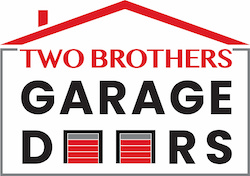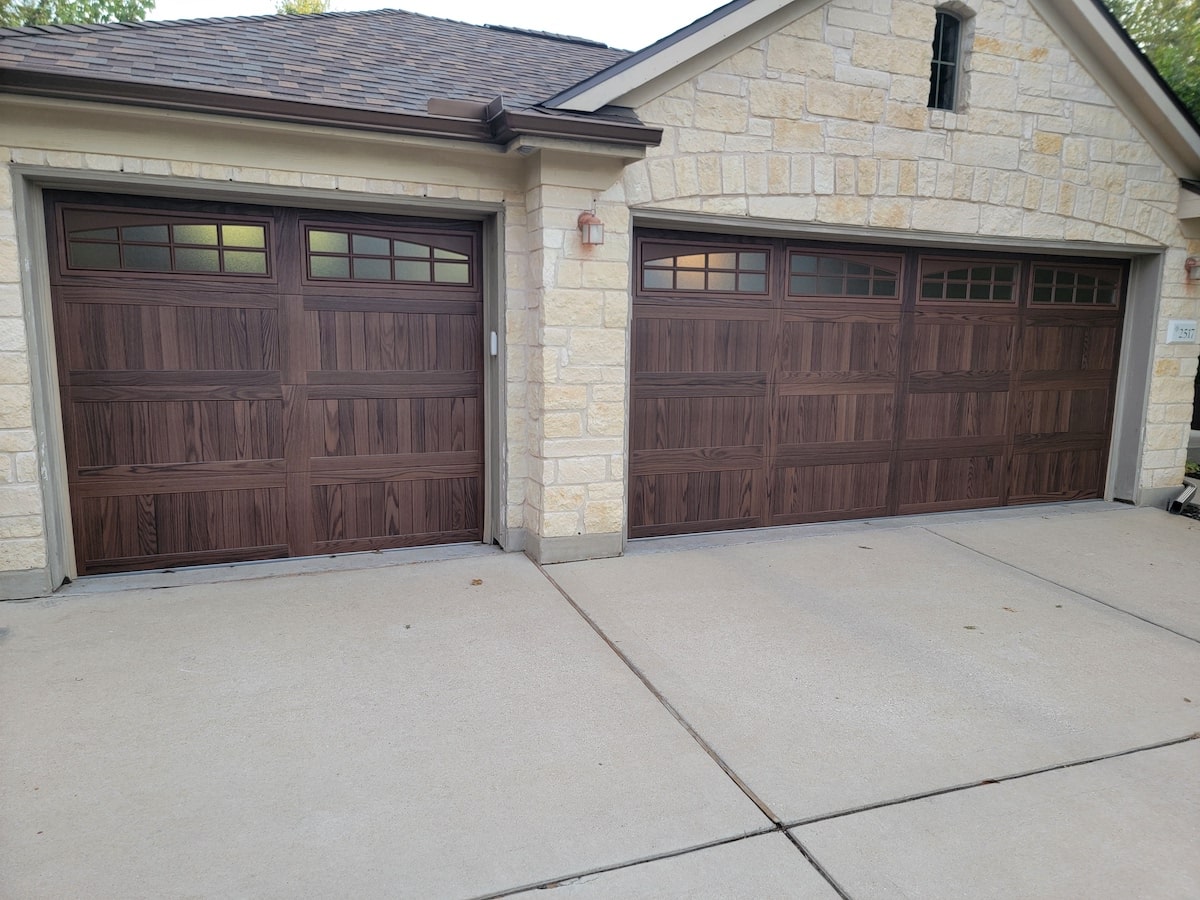
9 Types of Garage Doors
Selecting the right garage door is more than just an aesthetic choice—it’s a critical decision that affects your home’s security, energy efficiency, and curb appeal. With numerous types available, each offering unique benefits and trade-offs, deciding which type best suits your needs can be overwhelming. In this post, we’ll discuss the types of garage doors, materials used, and their pros and cons to help you make an informed choice.
The Different Types of Garage Doors
Let’s dive into the different types of garage doors available, along with their pros and cons:
- Sectional Garage Doors
- Roller Garage Doors
- Round the Corner Garage Doors
- Up and Over Garage Doors
- Side-Hinged Garage Doors
- Slide to the Side Garage Doors
- Counterweight Garage Doors
- Tilt-Up/Up and Over Canopy Garage Doors
- Tilt-Up/Up and Over Retractable Garage Doors
Sectional Garage Doors
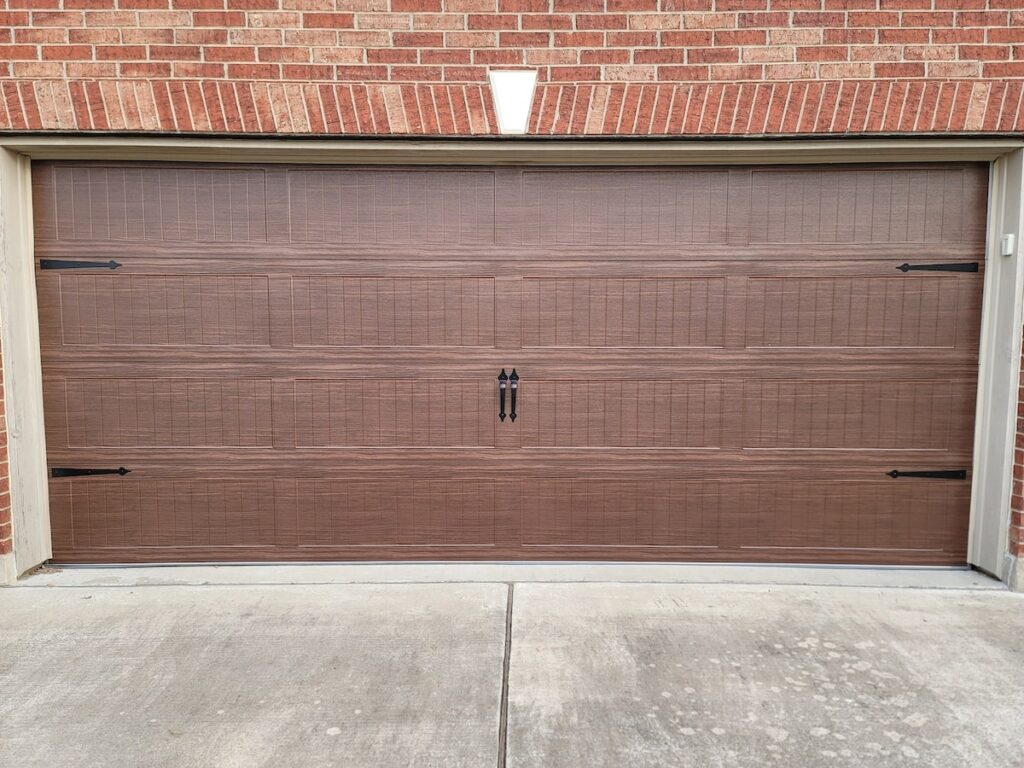
Design and Functionality: Sectional garage doors comprise panel sections connected with hinges and open vertically.
Pros:
- Highly secure and weather-resistant
- A space-saving design ideal for short driveways
- Excellent insulation properties
- Available in various materials and styles
Cons:
- Can be more expensive compared to other types of garage doors
- Requires regular maintenance for springs and tracks
When to use Sectional Garage Doors: Ideal for homeowners looking to save space in their garage.
Roller Garage Doors
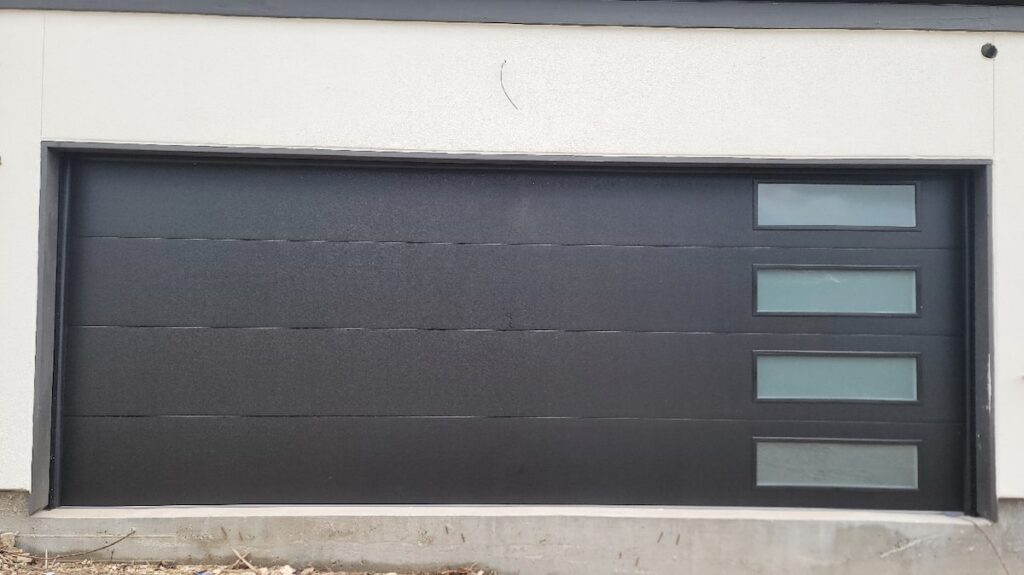
Design and Functionality: Roller garage doors are made of narrow slats that roll up into a drum above the garage opening. They are perfect for homes with limited ceiling space inside the garage.
Pros:
- Excellent at saving space, especially in garages with low or obstructed ceilings
- Easy to operate – can be opened manually or automatically
Cons:
- Typically less insulated than sectional doors
- May require more maintenance than other garage door types
- Motorized garage doors cost more
When to use Roller Garage Doors: Roller garage doors are suitable for homeowners or commercial spaces looking for a compact, space-saving garage door.
Round the Corner Garage Doors
Design and Functionality: These doors slide sideways along the garage wall, making them ideal for spaces where overhead clearance is an issue.
Pros:
- Saves ceiling space
- Provides full garage access
Cons:
- Limited availability and higher cost
- Requires wall space for installation
When to use Round the Corner Garage Doors: Best for garages with irregularly shaped openings.
Up and Over Garage Doors
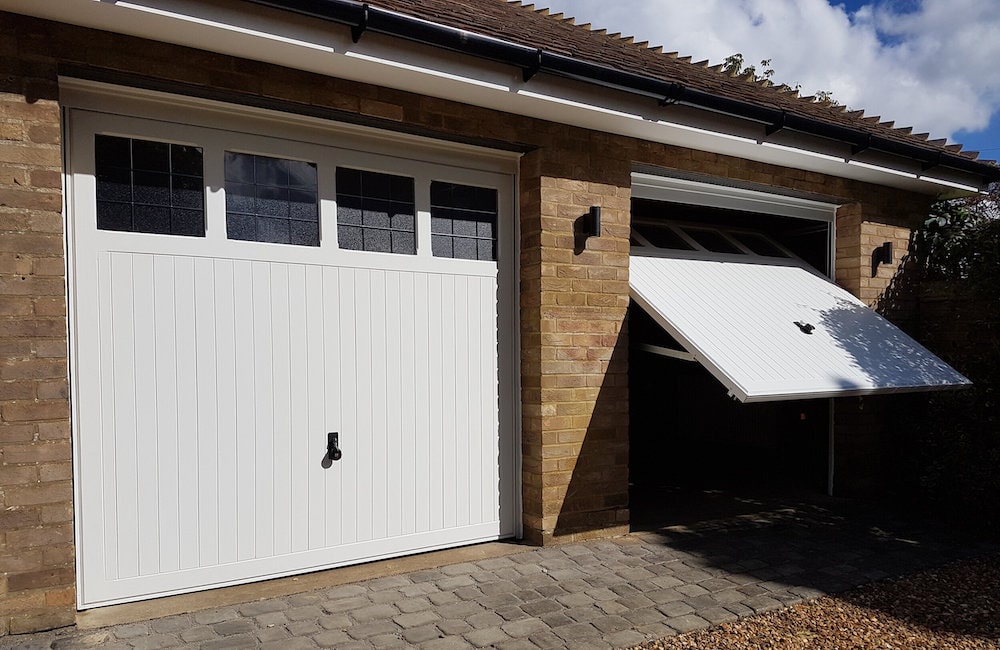
Design and Functionality: These doors tilt out and up, lying flat above the garage when open.
Pros:
- Simple and robust design
- Cost-effective
- Low maintenance
Cons:
- Requires clearance space in front of the garage
- Little to no insulation
When to use Up and Over Garage Doors: Ideal for homes with ample driveway space.
Side-Hinged Garage Doors
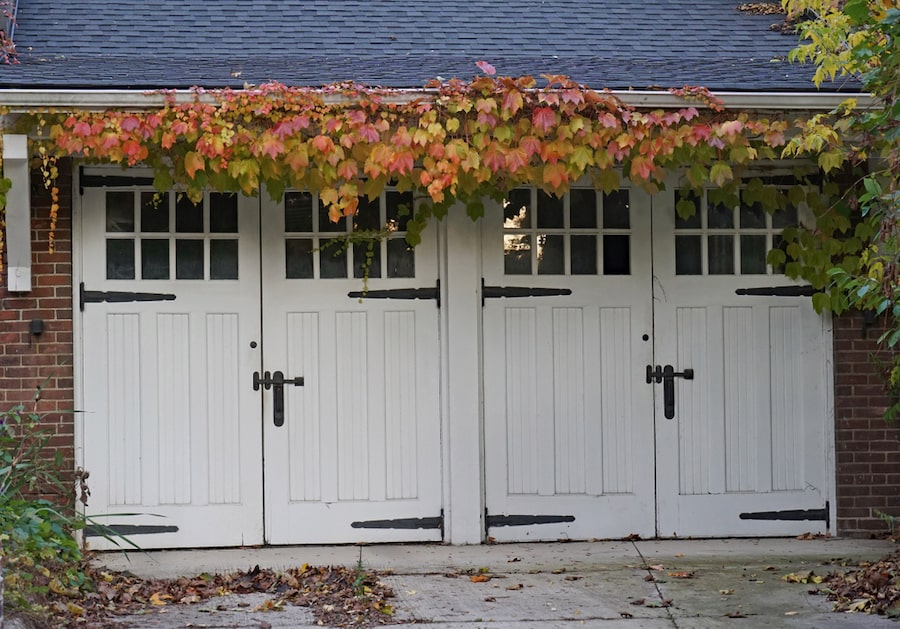
Design and Functionality: These doors swing open from a hinged frame on one side of the garage opening.
Pros:
- Offers pedestrian access without opening the entire door
- Classic aesthetic appeal
- Minimal headroom required
Cons:
- Requires clearance space outside the garage
- Can be less secure if not properly reinforced
When to use Side-Hinged Garage Doors: These are perfect for entryways where people can easily access the garage.
Slide to the Side Garage Doors
Design and Functionality: Similar to sectional doors, they slide to the side of the garage rather than move up.
Pros:
- No overhead space needed
- Can be manually or automatically opened
Cons:
- Requires a clear sidewall for the door to slide along
- May be more costly than other garage door designs
When to use Slide to the Side Garage Doors: Best for garages with limited overhead space.
Counterweight Garage Doors
Design and Functionality: Balanced by counterweights, these doors move vertically and eliminate the need for overhead tracks.
Pros:
- Quiet and low-maintenance
- Can be designed to lift vertically, eliminating the need for extra space
Cons:
- Can be complex and expensive to install
- Limited styles
When to use Couterweight Garage Doors: Ideal for modern homes with limited overhead space.
Tilt-Up/Up and Over Canopy Garage Doors
Design and Functionality: The door tilts upwards and slides back into the garage along tracks on the ceiling, forming a canopy when open.
Pros:
- Simple design and easy-to-operate
- Low maintenance
- Budget-friendly
Cons:
- Requires more clearance space
- Little to no insulation
- Requires considerable clearance space
When to use Tilt-Up/up and Over Canopy Garage Doors: These doors are suitable for homeowners looking for simple, easy-to-use garage door.
Tilt-Up/Up and Over Retractable Garage Doors
Design and Functionality: Similar to canopy doors they fully retract into the garage when opened.
Pros:
- Doesn’t take up driveway space
- Can be automated easily
Cons:
- More expensive than canopy doors
- Requires more space inside the garage
When to use Tilt-Up/up and Over Retractable Garage Doors: These are best for homeowners wanting a clean exterior look without compromising on convenience.
Garage Door Materials
The material used in your garage door significantly affects its durability, insulation, and maintenance. Let’s compare some common options:
Wood
Pros:
- Offers natural beauty and warmth
- Comes in various designs and finishes
Cons:
- Requires regular maintenance (painting/staining)
- Susceptible to warping and rot
- More expensive than other options
Ideal for traditional and classic-style homes.
Steel
Pros:
- Highly durable and secure
- Low maintenance
- Available in various styles and colors
Cons:
- Prone to rust if not properly maintained
- Can dent easily
- Requires insulation
Suitable for modern homes seeking a blend of durability and low maintenance.
Aluminum
Pros:
- Lightweight and resistant to rust
- Can be designed with a wide range of finishes
- Ideal for wide double doors
Cons:
- Less durable than steel
- Can be more expensive than other materials
- Susceptible to dents and clanking sounds
Best for contemporary homes in coastal areas where rust is common.
Fiberglass
Pros:
- Lightweight and resistant to dents
- Can mimic the look of wood
- Low-maintenance
Cons:
- Can can crack
- Less insulating options
Perfect for homeowners looking for a low-maintenance, affordable solution.
Which Garage Door is Right for You?
Choosing the right garage door involves balancing several factors, including:
Budget
Determine how much you’re willing to invest in your garage door. While some options may have a higher upfront cost, they could offer long-term maintenance and energy efficiency savings.
Climate
Consider your local climate and weather conditions. Materials like steel and fiberglass may be more appropriate for humid or coastal areas, while wood can be ideal for moderate climates.
Home Aesthetics
Ensure your garage door complements the architectural style of your home. Whether you prefer a modern, rustic, or traditional look, there’s a garage door design to match.
Functionality
Think about how you use your garage. If you frequently enter and exit on foot, side-hinged or sectional doors may be more convenient. Roller and sectional doors are excellent choices for those with limited driveway space.
Conclusion
Selecting the right garage door impacts your home’s functionality, security, and curb appeal. By understanding the different types of garage doors and their specific benefits and drawbacks, you can make an informed choice that best suits your needs.
Ready to find the perfect garage door for your home? Contact Two Brothers Garage Doors today for a free quote. Your dream garage door is just a call away!
